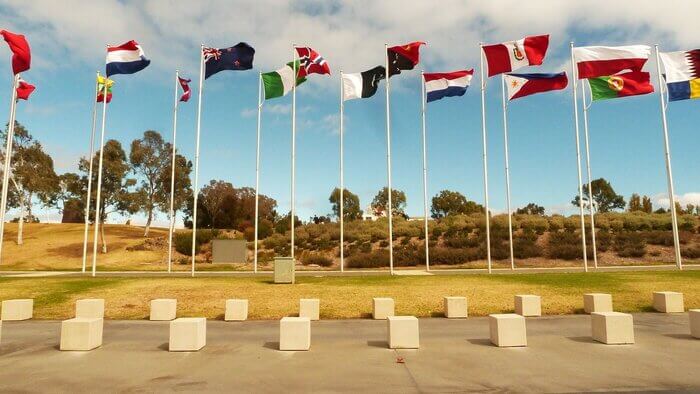
Imagine a situation: you are to master a piece of software but you don’t know what to begin with. And you find a user guide for your product. You start looking it through and see that it contains information in a wide variety of languages. The first idea that comes to your mind is: what if they don’t have my language? And, finally, you see it. What a relief! Now, you are going to find answers to all your questions… No such luck! You can hardly understand what the user guide is telling you. How come? Technical documentation is supposed to make a user’s life easy. Let’s look at what has gone wrong with the translation and how a technical writer can prepare technical documentation for the international market.
Why Should We Care About Translation?
Translation of technical documentation is essential for companies that want to sell their products globally. Businesses invest a lot in hiring experts to prepare high-quality translations. Why do they do it? First of all, they care about the positive image of the brand. Companies that take care of their clients gain trust and long-term relations with customers and partners. And, they want to reduce the negative aftermath of improper translation and, of course, responsibility: if customers do not understand how to use a product, they contact support more often which increases expenses; they cannot use a product properly and may even face such unpleasant things as incorrect edits and calculations, or even data loss. And what if we talk not only about data but also about health and safety? That is when we are to think about the price of poor translation.

How to Prepare Technical Documentation for Translation?
One might say that preparing a high-quality translation is what a translator should do. A technical writer is to prepare the document itself, and there is no need to blend the two occupations. But I’m going to tell you the following:
Successful translation depends on what a technical writer does to help a translator.
It means that it is high time for tech writers to change their routine to make technical documentation translatable. And here is what you need to know:
- Use controlled language. This type of language allows authors to create easy-to-read and understandable technical documentation for both native and non-native speakers and optimize the process of translation. Controlled language presupposes the use of simplified grammar and a limited vocabulary. As a result, documentation becomes more structured, consistent, and well-organized, which contributes to easy and smooth translation. A vivid example of a language like that is Simplified Technical English (ASD-STE100). This post will tell you more – What is Simplified Technical English.
- Create a glossary for a translator. Some words, even technical terms, have several meanings, and their explanations can be vague. This is a source of mistakes in translations. You can take the most widely spread terms and notions that are used in your docs and explain them. That will reduce ambiguity not only for users but for translators as well.
Some terms should not be translated. Inform your translator about that. That is a matter of great importance.
Pay attention to abbreviations. Either you explain them, or you limit their use. - Be consistent when using terminology. Some terms have very close explanations. If you start using a term at the beginning of your document, do not substitute it for another term with the same meaning later on. One action – one term, one phenomenon – one term. Do not forget about that.
- Avoid using culture-specific things, sports references, and humor. International documentation is meant for all kinds of customers. What is acceptable in one culture may be odd for another culture; what is funny in one culture may be offensive in another culture. Sports is something very special. Some terms that are supposed to be well-known in one country, will puzzle customers from another country. So, technical documentation leaves no space for things like that.
- Prepare for design changes. A translated text may be longer than the original one. It is a potential problem in case the number of pages of the translated version should remain the same, or there are visuals that should remain in their places. Make sure you have additional space for text expansion.
- Make sure your visuals are universal and can be used in a translation. The first thing worth mentioning is that when you use pictures, screenshots, diagrams, or other visuals, make sure they contain no text. Otherwise, you need to prepare another set of visuals with texts in the translation language. So, make sure your visuals are editable. The second thing is that not all symbols are universally acceptable. Either you substitute them or you eliminate them.
- Take care of such details as the date and time formats, measurement, telephone numbers, etc. Each country has its own habits and acceptable formats for these things. Make sure you know that and follow the rules.
- Choose a translator with expertise in your field. Of course, if a technical writer can take part in choosing a translator or a company. That may be a crucial factor that can influence the quality of an international translation. For example, those translators who work with medical translations are not familiar with the terminology and processes that take place in IT companies and vice versa.
How Can You Manage Translation in ClickHelp?
Definitely, those tech writers who deal with translation would be happy to find a tool that can combine both technical writing and translation. Being aware of this we are happy to announce that in a couple of weeks ClickHelp will become such a tool. Our new release is coming. And here is a sneak peek of the new functions you are going to get:
- ClickHelp now comes with a CAT-like translation editor which can be used to localize topics, portal Home page, menu items, etc. in a single unified UI.
- Special support will be added for multi-language documentation including UI localization and translation workflow support. Authors will be able to provide different content for any number of languages with minimal effort.
- More localization: home page, portal settings, menu items, variables, index keywords, and other data contributing to reader experience can also be localized through a single unified UI.
- New user role added: Translator. The role is a perfect fit both for third-party contractors and for in-company translators which contribute to your projects’ translation or review your translations.
- New project type implemented: Translation Projects.
These are just a few innovations, the whole list of them will be covered by our new release blog that is coming soon. We did our best to make the symbiotic relations between technical writers and translators more efficient and fruitful and we hope you’ll enjoy our product.

Conclusion
International cooperation and globalization are the two overall processes that are speeding up every day. And, surely, they influence such industries as technical writing and technical translation. Well-done translation can increase the engagement of your target audience. A poor translation can ruin the finest user guide and even reduce sales. As a technical writer, you CAN and SHOULD prepare your technical documentation for translation. A high-quality translation is always a result of a collaboration of both technical writers and translators. Only a high level of understanding will lead to great results. And software products and services are meant to help this type of cooperation. ClickHelp is one of such tools that can meet the needs of both sides.
Good luck with your technical writing!
ClickHelp Team
Author, host and deliver documentation across platforms and devices


